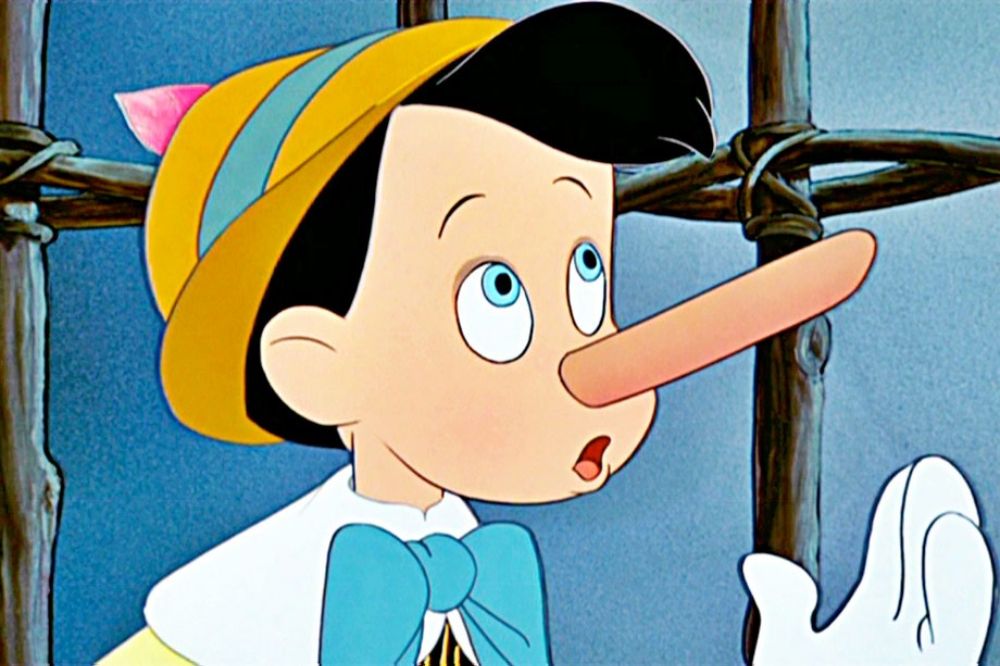
5 effective ways to spot a liar according to science
All human beings have the ability to lie and many of us have the ability to lie. Several studies have suggested that, on average, we tell one or two lies a day. Fortunately, behavioral experts say there are ways to spot the signs of lying.
 Credit: Disney
Credit: Disney
see also
Today, through this article, we share with you some techniques for detecting liars. First, according to Tracy Brown, a body language expert and author of How to Detect Lies, Fraud, and Identity Theft: A Field Guide to Lie Detection, the first thing to consider is how a person behaves when they are honest in order to have a possible basis for comparison. If you are encountering a stranger, it is best to start by asking a simple question like “Where are you from?”.
Here are 5 ways to spot a liar:
1- Analysis of the general situation
“In the world of behavior analysis, baseline observations are the set of nonverbal traits observed in the absence of stressors and stimuli. Most benchmarks must be calibrated in non-confrontational conversation” said Roger Stryker, a behavioral analyst with more than 30 years of experience in the field.
It is especially easy to set a standard for close people, such as spouses, children, and friends. “If you use visual behavior to assess the credibility of someone you know, you will also benefit from a baseline. Some people, for example, will never look at you. For others, every interaction is a stare. Knowing how to present (or not present) the person can help during Personal interaction in judging the significance of deviations from the norm Behavior expert Wendy L. Patrick explained.
2. Find the exact expressions
Research conducted by Stephen Porter’s Forensic Psychology Laboratory at Dalhousie University found that the face betrays a liar’s true feelings by showing true feelings. When people were asked to lie, the researchers were able to distinguish rare minute expressions, i.e. flashes of true emotion that briefly appear, between five and a quarter of a second, on their faces.
When someone tells a very big lie with serious consequences, the face is sure to reveal deception. “Unlike body language, you cannot fully observe or control what is happening on your face. This research was the first detailed demonstration of the secrets that are revealed when people display a fake face, by simulating or inhibiting many universal emotions.” said Leanne ten Brinke, a graduate student in experimental psychology. These small involuntary activities can release feelings that a person wants to hide, such as anger or guilt.
3. Eye observation
It is said that our eyes are the window to our souls, and when it comes to a false discovery, analyzing it can lead to the truth. Science shows that liars do not avoid eye contact any more than those who tell the truth. In contrast, the main thing to look for in eye movement is a deviation from the baseline. The warning comes when the stakes are too high, like when it comes to cheating in a relationship or doing something in the office that could cost you your job. In these cases, some studies have shown that aversion to squinting is associated with deception.
“We are always looking to analyze deviations from normal behaviour. We assess everything a guest shows in terms of eye contact, focus and even pupil dilation or constriction. If eye contact was constant at the start of the conversation and then changed when a stressor or stimulus factor was introduced, this should be noted as a trait that could be a misleading response.” Researcher Roger Stryker said.
4. Fake smile spot
Liars tend to press their lips together, making their smiles look restless or tense. But it’s not just the lips, it’s actually the mouth/eye combination that is key to spotting the lizard. “An honest person has a full smile on his face, like the famous Mona Lisa. The famous wrinkles called “crow’s feet” signify honesty » Wendy L. explained. Patrick. So focusing on a person’s eyes when they are smiling is a great way to rule out these other explanations.
There are seven human emotions: anger, joy, sadness, fear, surprise, disgust, and contempt. They play when someone draws a smile. The lower half of the face expresses secondary human emotions and the upper half of primary human emotion. Roger Stryker said. He adds: “A true smile represents the lower and upper hemispheres corresponding to the human face. With a fake smile, there is a separation between the eyes and the mouth. The upper hemisphere or the areas around the eyes may show contempt, anger or disgust.”
5. Recognize stress
If you’re convinced that your friend, boss, or family member just lied to you and you decide to pressure him or her by asking for clarification on his statement, there’s a good chance there will be changes. Physical signs that he’s uncomfortable. When the human brain is stressed, its temperature rises and often manifests itself in the form of sweating on the forehead or upper lip of the face. Also touching your face has a calming effect on a stressed brain. Roger Stryker explained.
Obviously, again, it depends on each person’s core personality. And for good reason, some people have a habit of rolling their hair or touching their faces. However, you should remain alert for any changes in blinking speed, swallowing, rubbing hands on the face, yawning, hair spinning, or breathing rate, all of which may indicate that the lie is continuing.

“Organizer. Social media geek. General communicator. Bacon scholar. Proud pop culture trailblazer.”
